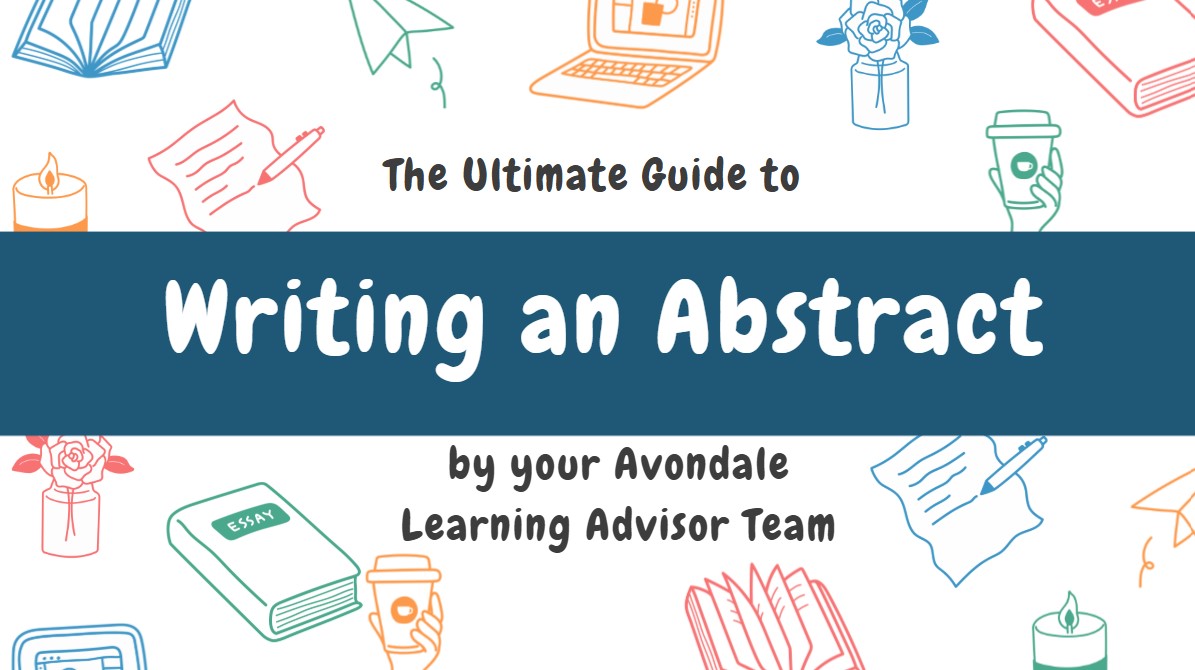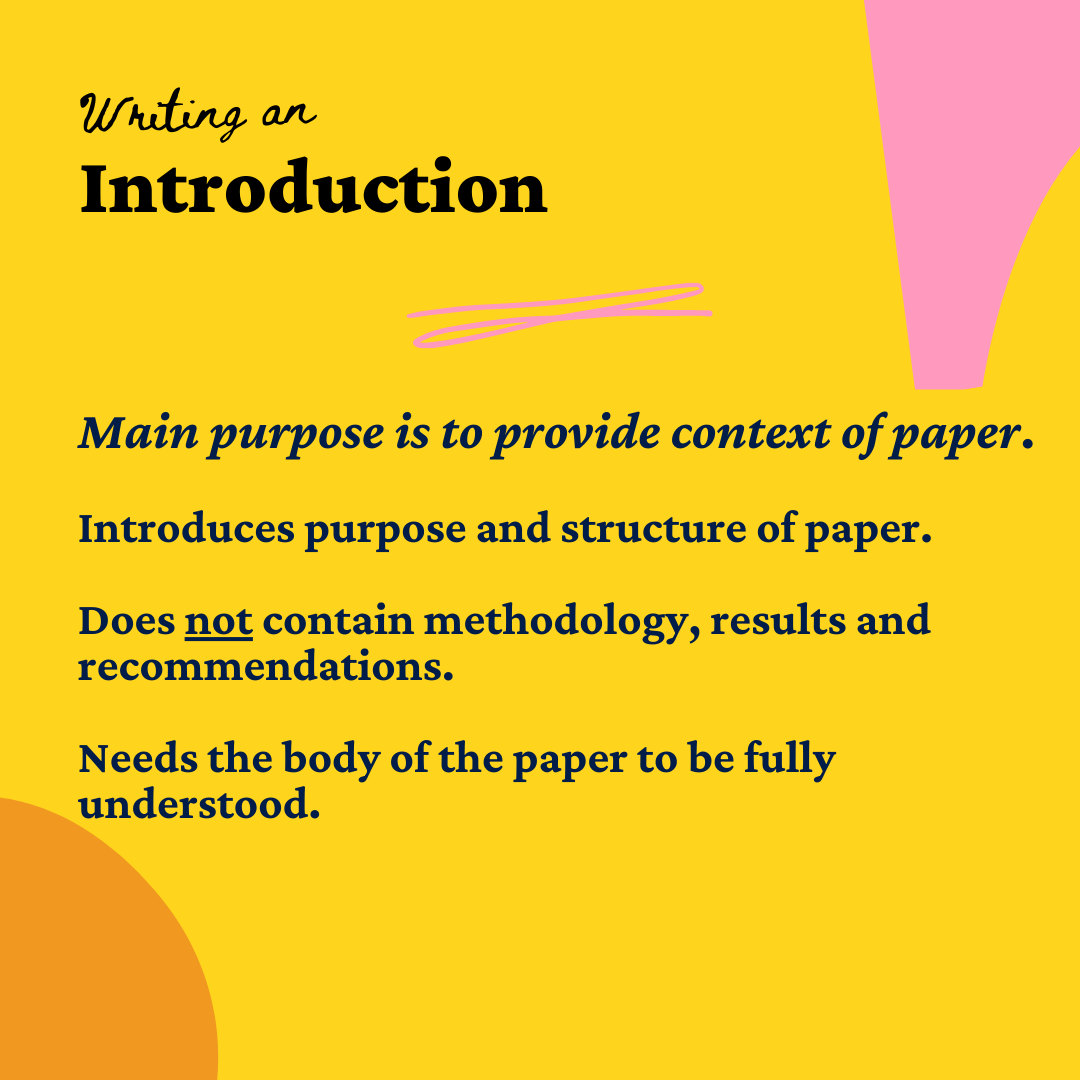


Purpose of an Abstract
An abstract provides a clear overview of the purpose and key contents of a paper, as well as any relevant findings and conclusions. According to Lester and Lester (2005) an abstract is a “quick but thorough summary of the contents of your paper” (p. 324). In a publishing setting, your abstract may be the only part of your paper read, so it is important to write a concise synopsis of what your paper covers, as it helps the reader to decide whether or not it is useful to them.

Snapshot
It's in the Details
There are a number of things to consider when developing your abstract. Your abstract should:
Remember, you abstract should be a clearly articulated and self-contained paragraph that provides a concise summary for your reader.
Abstract vs Introduction
Knowing the difference between an abstract and introduction can sometimes be confusing—an abstract is a concise summary that could be used to index a paper in a database, and an introduction is an overview of a paper that provides a context and offers a thesis statement.
Abstracts
Introductions
Format of an APA Abstract
Not all papers require an abstract—check with your assignment rubric to confirm whether or not you need to write one. However, often an APA paper does require as abstract and the following guidelines refer specifically to an APA abstract:
Abstract should be 150-250 words in length.

vs


This resource page has been developed to help you write an abstract. However, your lecturer may have specific ideas of what should and shouldn't be included in your assessment. Always ask your lecturer if unsure.
Lester, J. & Lester, J Jr. (2014). Writing research papers: a complete guide (15th ed.). Pearson Higher Ed USA.
APA Style (2020). Abstract and Keywords. https://apastyle.apa.org/instructional-aids/abstract-keywords-guide.pdf
https://sites.stedwards.edu/owl/2017/03/28/differences-between-abstracts-and-introductions-in-apa/
Avondale University acknowledges our Sovereign God as Creator and Provider of all things. We respectfully acknowledge the Awabakal and Darramuragal people as the traditional custodians of the lands on which we live, work, study and worship across our Lake Macquarie and Sydney campuses. We pay our respects to Elders past, present and emerging, and extend that respect to all First Nations People.
Avondale University is a member of the worldwide Seventh-day Adventist system of universities and colleges.
CRICOS Provider No.: 02731D. RTO: 91191. TEQSA: PRV12015. ABN: 53 108 186 401.
© Avondale University Ltd 2025